Walk with me for a while. There’s a trail I know, not too far from here, where the Strawberry tree is in fruit and grapevines snake through the hedgerows. It is a quiet path, even desolate at times, but you’ll have the five of us for company and we’re a raucous bunch.
We’ll start in Aljezur, a small market town on the edge of the Costa Vicentina National Park with its Moorish architecture and 10th Century crumbling church. There is a statue of Henry the Navigator where many pilgrims pause on their trek to pay homage. I have decided not to begin there; I am not interested in glorifying Empire.
We will begin across the street, where a resident has cultivated the most glorious garden in pots and window boxes above the cobbles. When drought is prevalent, her pots are wild beacons of rose, cobaea and bright green foliage.
We leave the village with backpacks full of water and bags of nuts from the market. My crew chose their own picnic: chorizo, tins of sardines and a soft, ripe mango. We make it to the first marker for the hike before the mango is cut into strips and the younger two fight over the stone. This sweetness will sustain us as we climb towards Arrifana among cork oaks and abandoned farmsteads.
This, my friends, is the Rota Vicentina.
Rota Vicentina
In 2013, a non-profit organisation was formed to manage and promote walking trails in south west Portugal. Hundreds of local companies have partnered with the organisation to maintain a 700km network of trails in the name of sustainable, regenerative tourism. The original trail was a 220km long stretch linking Santiago do Cacém with Cabo de São Vicente, the most southwesterly point of Europe. I knew I wanted to end our walk there, where kestrels hunt migratory birds and the sun dissolves into the great, wild Atlantic.
But I am getting ahead of myself.
An 80km ambition
I suppose I should tell you before we go on, that we intend to walk four stages of the 12-stage trail. That’s 80km of putting one foot in front of the other, and I’m really not sure if the kids will manage it. Still, there are many villages on the way that sell cans of Fanta, fresh bread rolls and those calorific pastéis de nata. Oh, and I should also introduce you to Hurricane Kirk; he’ll create a bit of havoc along the way.
The most beautiful thing about this trail, is its proximity to the sea. We are never too far from it and, for a lot of the walk, we’re on a cliff edge, watching huge waves pummel walls of limestone.
Between Aljezur and Arrifana there’s a coastal variant that allows us to walk barefoot along red sand trails. Would you like to crawl with the younger two? It feels so good to kneel among the juniper with the sun on your face, then scurry like a dog in the footsteps of pilgrims. This simple act allows us to be grateful for our own two feet and the distance they carry us.
The beach at Arrifana appears beneath us like the softest of landings. Don’t hold back now, run the switchbacked road to the bottom then throw your boots off and wade into the sea.
There are happy surfers everywhere, and they really are the friendliest bunch. One directs us to a bar overlooking the beach. I eat soft-shell crab in a bap and drink cold, white wine while a fingernail of white moon appears. We have walked 12km, but we’re miles away from our hostel. I could do it, if I had some ice-cream, my eight-year-old says. Well, okay then.
On Day Two, we’ll cut a wee corner. A taxi to Monte Novo then onwards to Carrapateira by foot. It’s hot and we stop beneath a cork oak to picnic. Did you know that Portugal supplies 50 percent of the world’s cork? The base of the trunks are stripped like thin, bare ankles, but the branches are thick and offer generous shade.
Later, we pass through Bordeira, a sleepy little town with an ancient spring in which we find a huge, natterjack toad. We play Uno in the village square and blag a few cans of iced tea from the shuttered local shop.
Aren’t People Wonderful?
In Carrapateira, we rest. Another great thing about exploring by foot is the places we stumble into. Like Monte da Cunca, a smallholding of animal shelters renovated into Eco Apartments and an ambitious reforestation project. Oh, and on Tuesdays, a couple of local Italians run a pizza night. Eat your fill, there’s a long trail ahead!
After a rest day, and lots of pizza, it’s a short hike to Pedralva where a group of friends clubbed together to buy a village (Aren’t people wonderful?) They restored the abandoned streets and dwellings to create the most remarkable haven with swimming pool and restaurant. It’s called a slow village and I am grateful that time stands still for the one night we are here. The children find a ball, and a game ensues where it is rolled from the top of the village to the bottom down the smooth, cobbles to hit one of three obstacles for a win. It lasts hours.
You might have noticed, we have no screens on this walk. It was a family decision to leave them in Ireland. We have a lot of books on our Kindles (theirs, not mine. I’m still not a convert and preferred to lug Richard Power’s epic Overstory in my backpack - more on this incredible book soon); a frisbee, Uno and iPods full of music and podcasts. Oh, and conversation, a heck of a lot of conversation.
How far can we go?
From Pedralva, we run an experiment. Ten kilometres felt easy, we were just hitting our stride - could we double it? How about treble? How far could you walk on a sunny day? What if it rained? Like, wet-to-your-knickers-in-less-than-60-seconds kind of rain? Let’s just see how we go, shall we?
Pedralva to Vila do Bispo is a bit of a slog through wind farms and gorse. Let’s play word games: Name 10 things that are blue; three rock bands for every letter of the alphabet; 10 Harry Potter pets. We make it to a cafe in town before the heavens open and agree to match the 12km we’ve already walked with another 12. That will take us to the trail’s end.
The road back to the coast is bleak and wind-battered. The sky is overcast and spirits are damp. Shall we read a book? Sam pulls out The Blue Book of Nebo by Mannon Steffan Ros, an award-winning apocalyptic novel that mirrors the eerie landscape. We’re two chapters in when I see the dark cloud. Coats on, I order. We needn’t bother; this isn’t the type of rain you can escape. It’s hurricane rain, and if getting wet is the worst of it, we’ve fared far better than most.
The Sacred Peninsula
A turning point. We have 10km to go and we’re drenched. My socks absorbed a litre each and my boots are full of puddles. I look at the children. They’re still walking, not complaining, one of them swears there’s blue sky over the sea. There’s a coastal variant at this point on the trail. It adds more distance but the views, apparently, are worth it. Let’s take a vote…
To the coast we go.
It takes seven miles for my shorts to dry, but the sun is out and don’t we all look marvellous? We’ve got R.E.M.’s ‘It’s the end of the world as we know it’ stuck in our head because that’s what sailors from the known world called the headland. To our ancient ancestors, it was the Sacred Peninsula.
There is no-one else here. The earth is ochre and a snake crosses the path in front of us. We turn giddy from the shock: its arrow-quick body, the dent in the sand.
We list our animal encounters and note that every one happened on a walk.
In Circles
I quote TS Eliot to the children:
We shall not cease from exploration
And the end of all our exploring
Will be to arrive where we started
And know the place for the first time.
We talk about what it might mean and our conversation goes in circles. I decide to keep walking in the hope of one day understanding it better.
Can you see the lighthouse? Its beam can be seen from 96km away; we only have five to go. I lose count of the kestrels hunting the scrub around us and the swallows, swifts and martins that disappear over the cliff edge. I am gripped by a deep sense of purpose. I have not had much time for deep thought or journalling; my mind is very clear and simple when I walk. But I have learned the importance of placing my right foot and then my left, of wearing a coat when it rains, laughing off wet knickers and respecting my strong, formidable body.
We made it
We reach the cape at dusk. This is the ideal time for day trippers to watch the sun set with a cooler box of drinks. It is not so ideal when the last bus into town left an hour ago. We made it, my daughter sighs, sinking onto the rock as the sky fills with fire.
Let’s step away from the children to discuss our plan. It is the same conversation we’ve had all week: when we booked accommodation too far from the trail; when no taxis served the restaurant; when the only supermarket was on the outskirts of town. We shrug then say, All we can do is walk. We turn our back on the sunset and watch with amazement as the kids climb onto the kerbstones and start to run. They are leaping from stone to stone and laughing as they go.
Never, ever underestimate children.
Three kilometres from town we reach a bar. They call us a taxi and serve us ice-cold drinks while we wait.
Don’t Miss a Thing
In Sagres, we rest. It is my daughter’s birthday so we eat ribs and swim in the sea. On our last day in Portugal, we lay out the options of things to do. One of them involves a seven kilometre walk to a small, secluded beach. There’s a shorter, more direct route on the road. But we might miss something at the coast, my husband says. The smaller trail gets the vote. Two kilometres in we watch a fisherman catch a sea bass from 200ft above the water.
Upstream
On Praia do Beliche, I lie on the hot sand while booted eagles soar above me. I have just finished my second read of the holiday, Raising Free People, by Akilah S. Richards, a powerful post-colonial manifesto for self-directed education. My children walked almost 80km of wild Portuguese terrain, and it was an adventure of a lifetime. But would you like to know a secret?
They would rather have been at school.
Don’t get me wrong, they loved the trip and we made very special memories together as a family. But they are part of a beautiful educational community here in Sligo and they asked us to schedule any future trips on school holiday time. That’s a tough pill to swallow, yet I am grateful for the medicine.
We are walking beside these powerful children of ours, not setting down a course they have to follow. That means honouring their innate sense of direction and allowing it to change our bearings. This might look very different as we approach the teenage years. It is my hope that they will live in the good of the trails they have walked and the the streams we encouraged them to stand in.
Stand them in the stream, head them upstream, rejoice as they learn to love this green space they live in, its sticks and leaves and then the silent, beautiful blossoms.
Attention is the beginning of devotion.
- Mary Oliver, Upstream
If I have whet your appetite for walking, check out the excellent Rota Vicentina website. We used the Cicerone walking guide you can find here, and an excellent luggage transfer service without which we could never have covered so great a distance. I’m also very happy to share accommodation tips, if you want to get in touch.
Adeus x




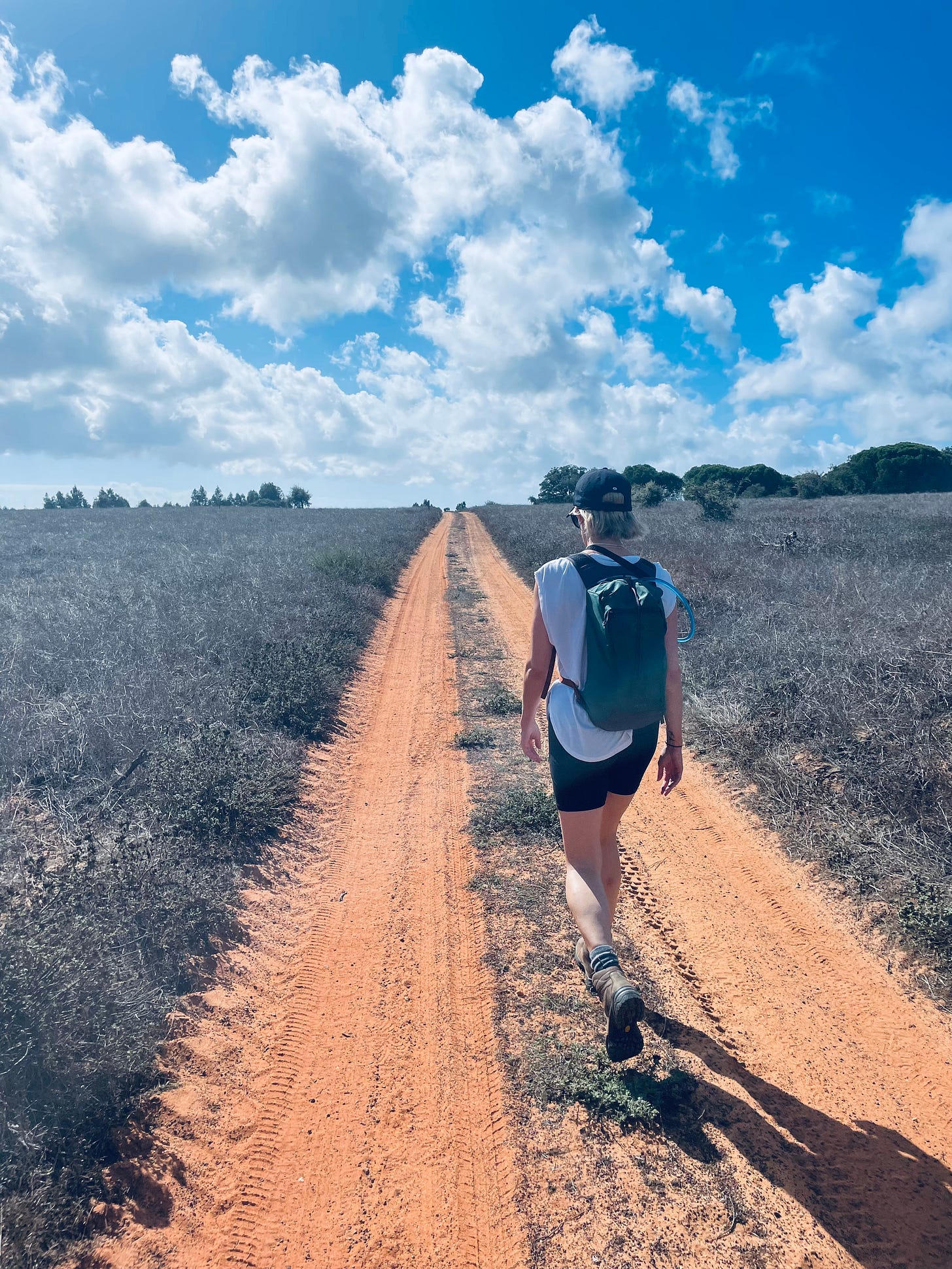


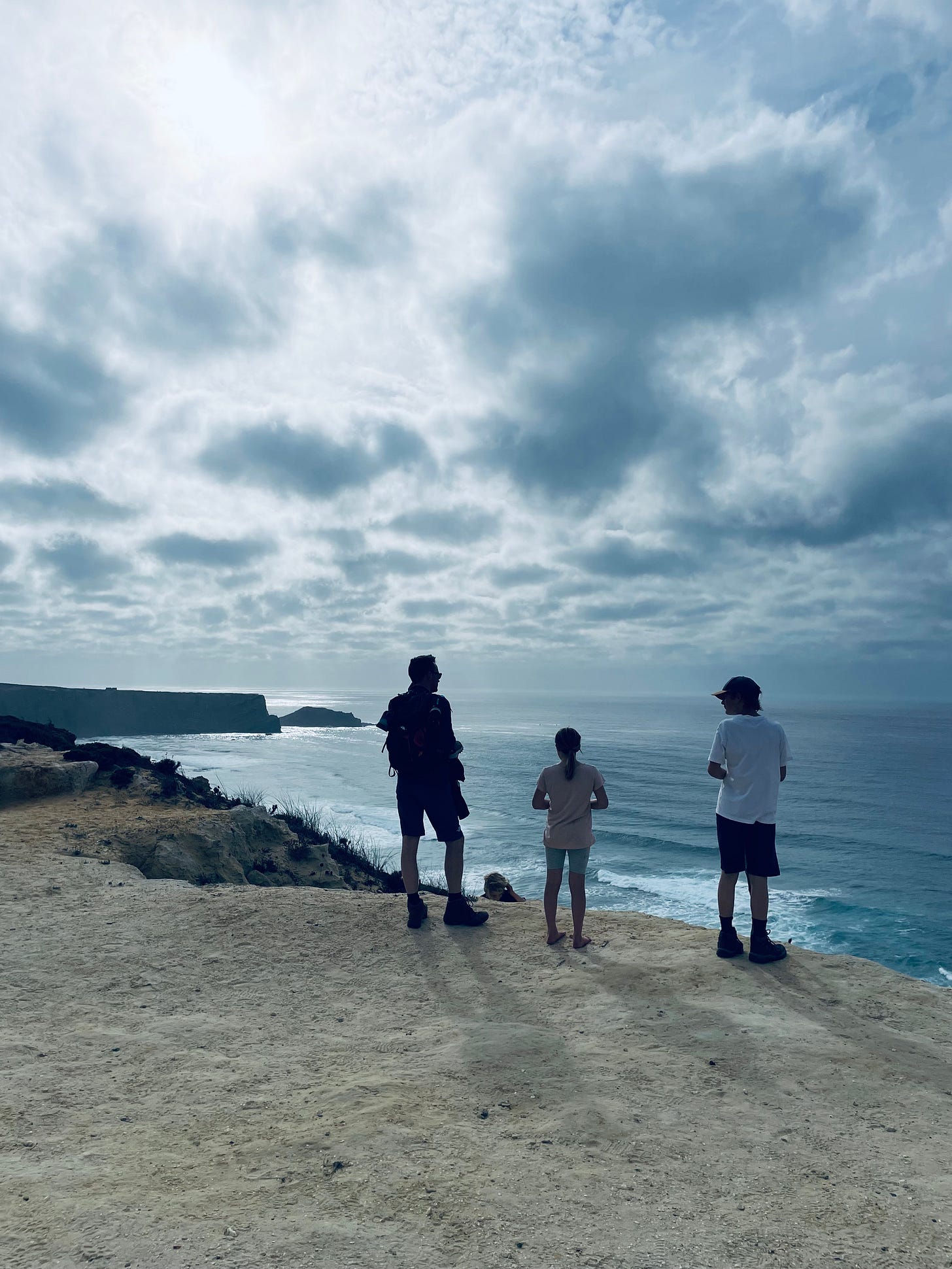
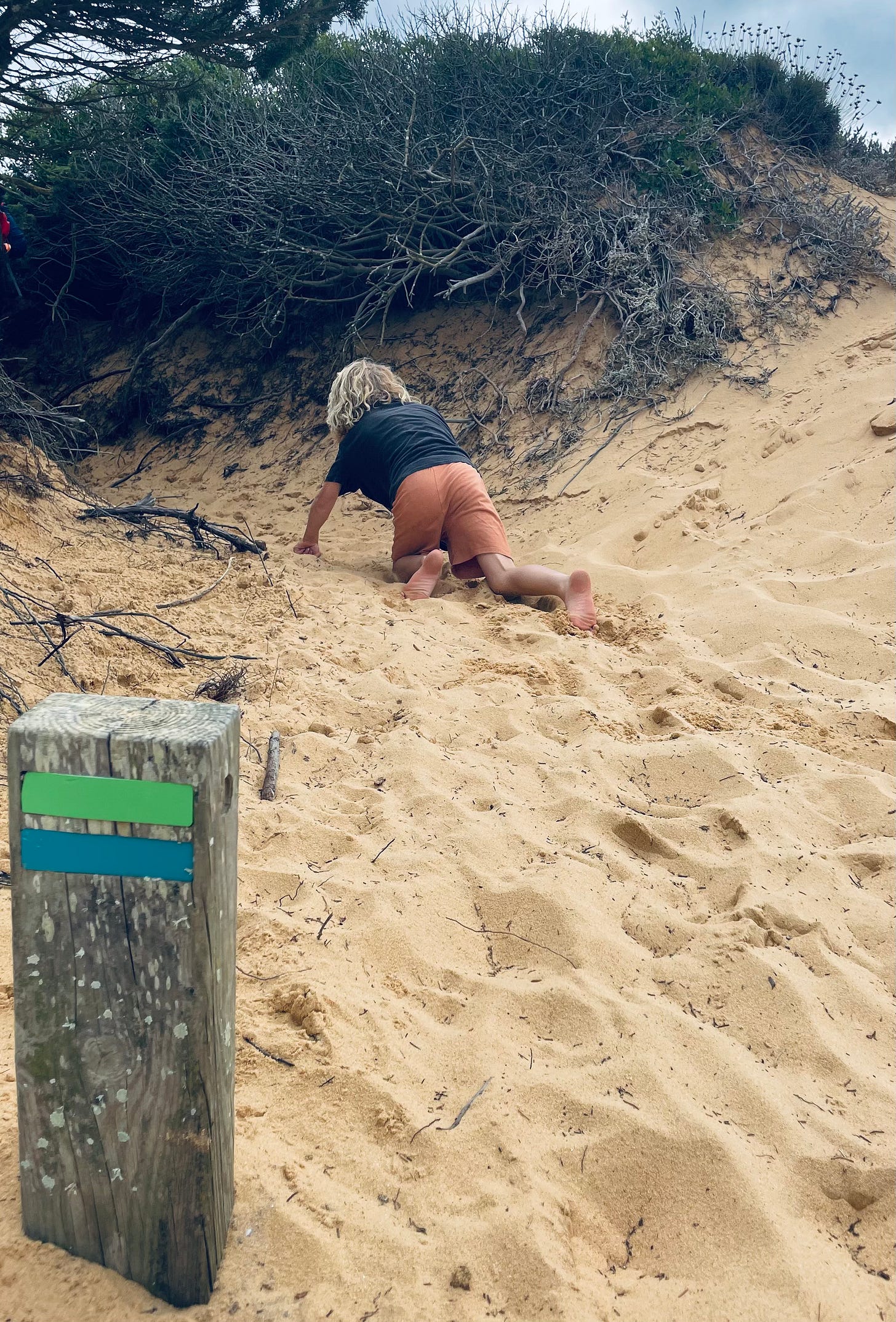


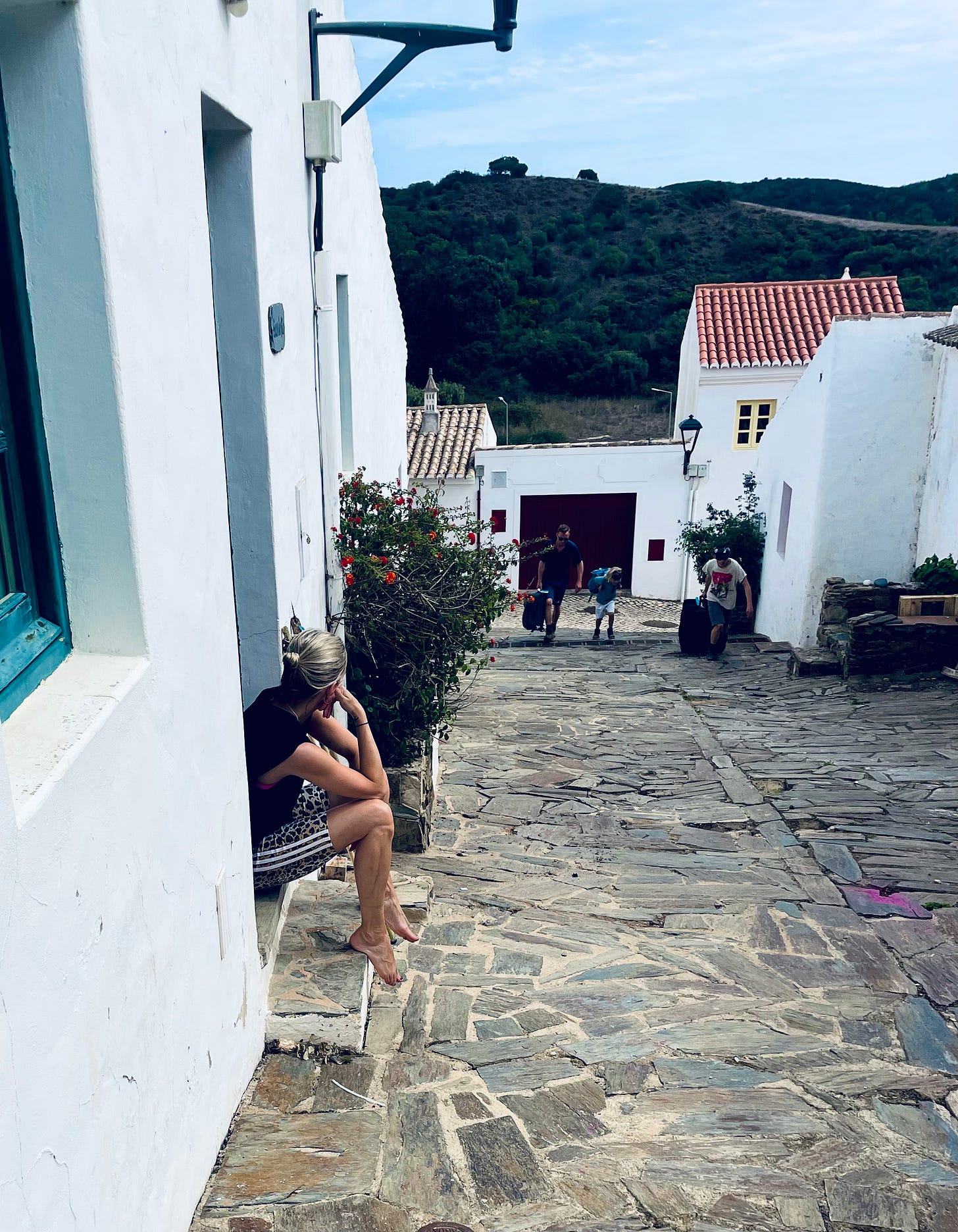
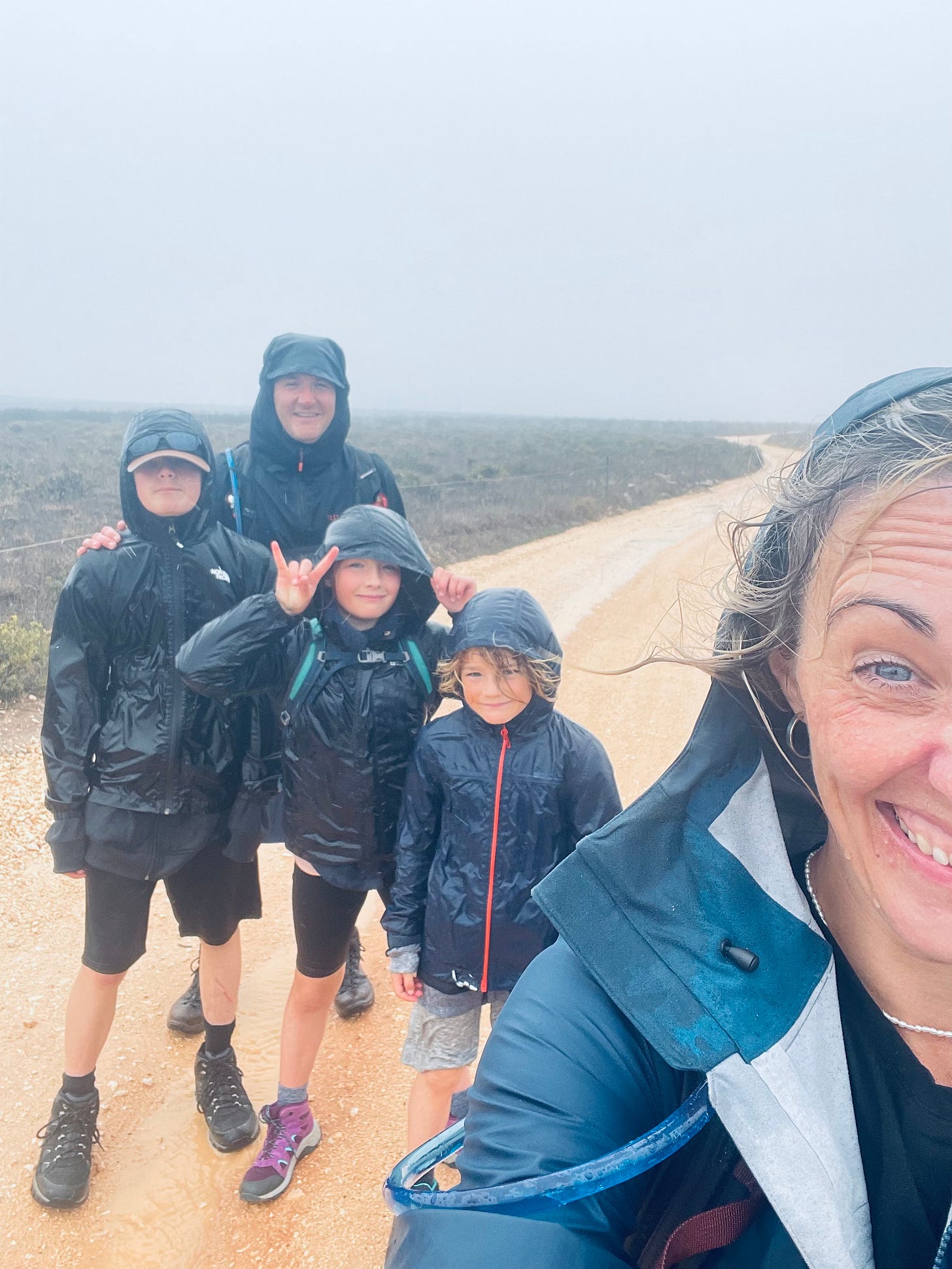

Great account of your Portuguese adventure. What an amazing, hardy, persevering family! You are an inspiration. Looking forward to hearing about all the bits in between.